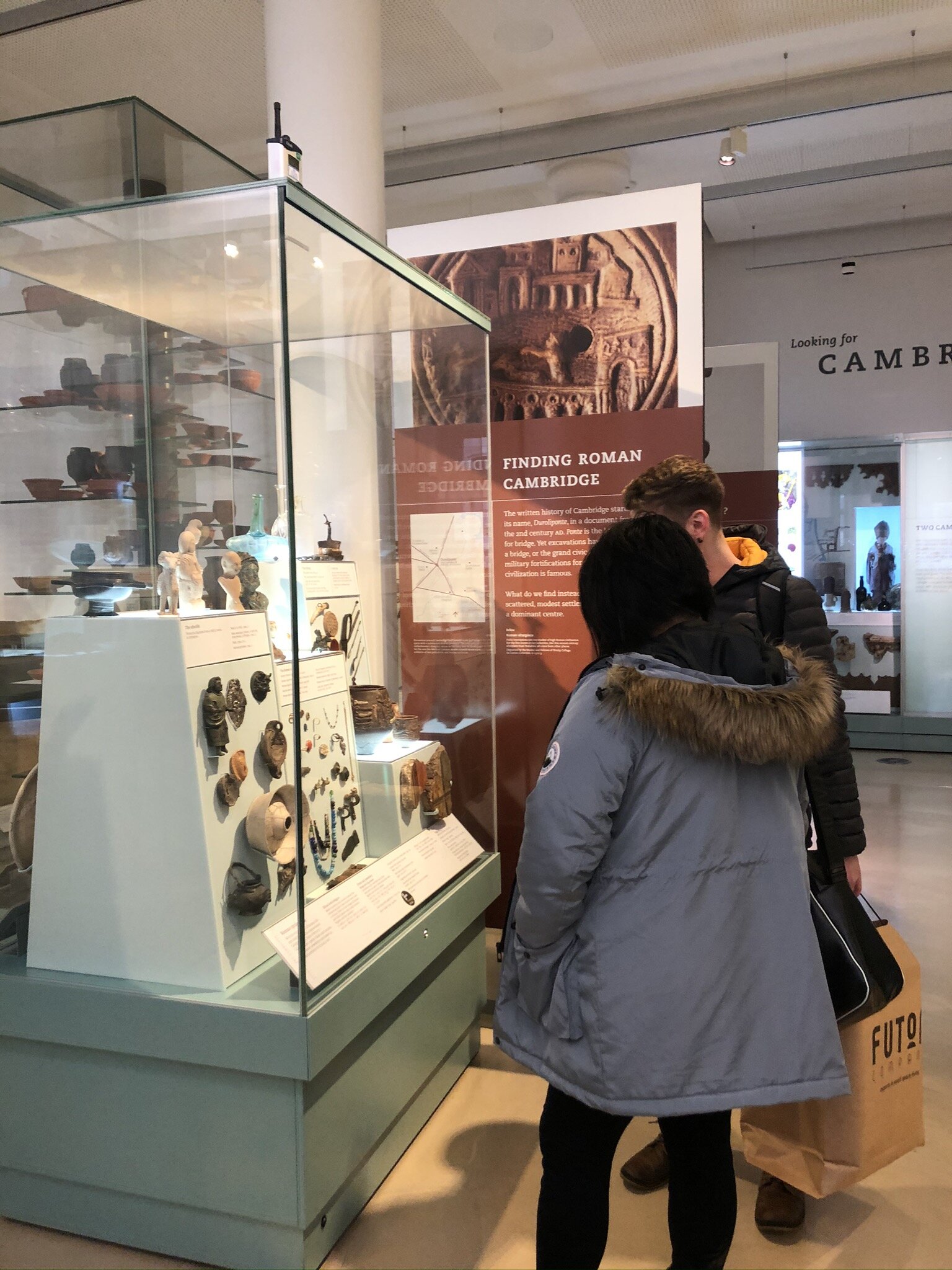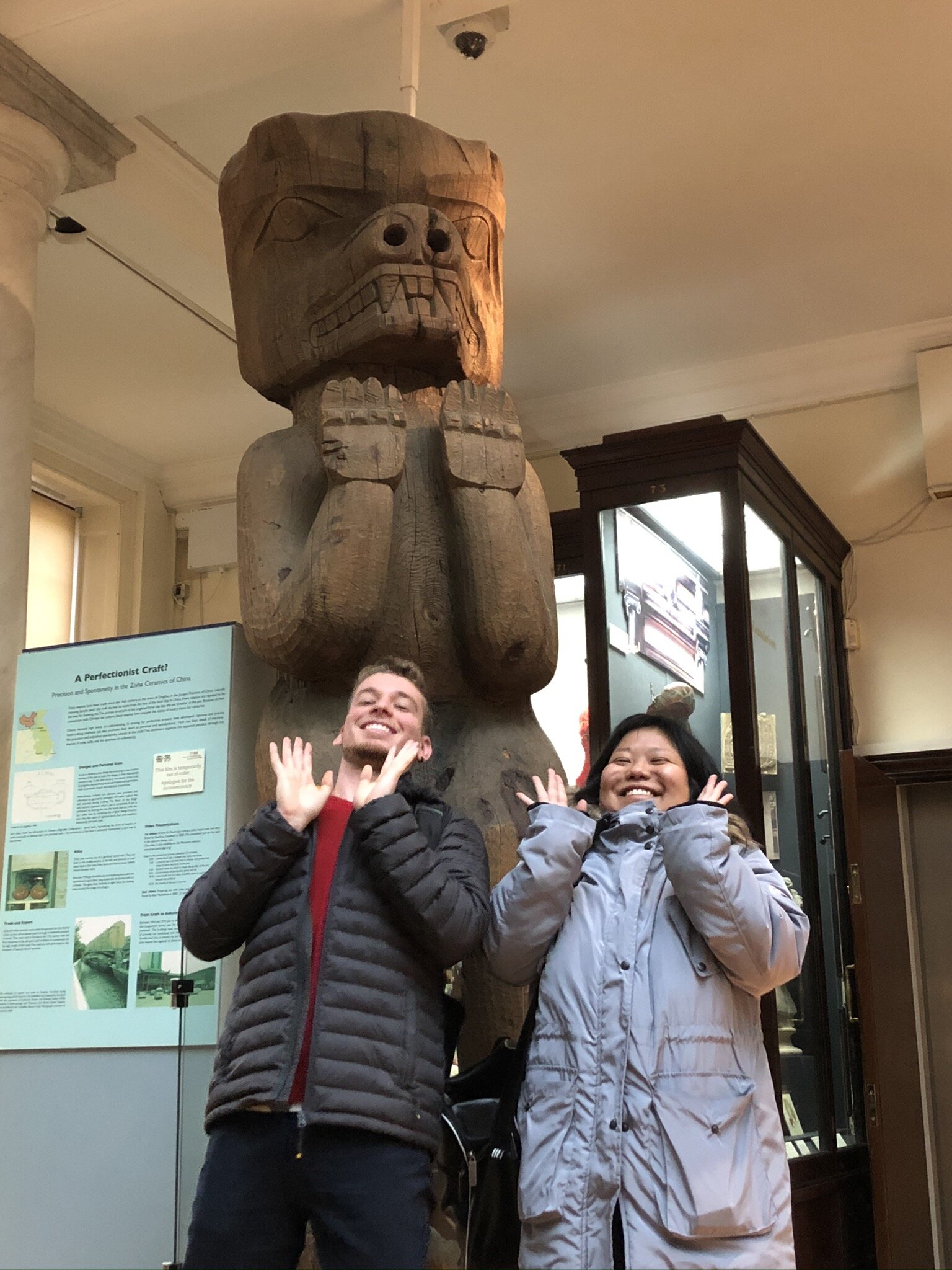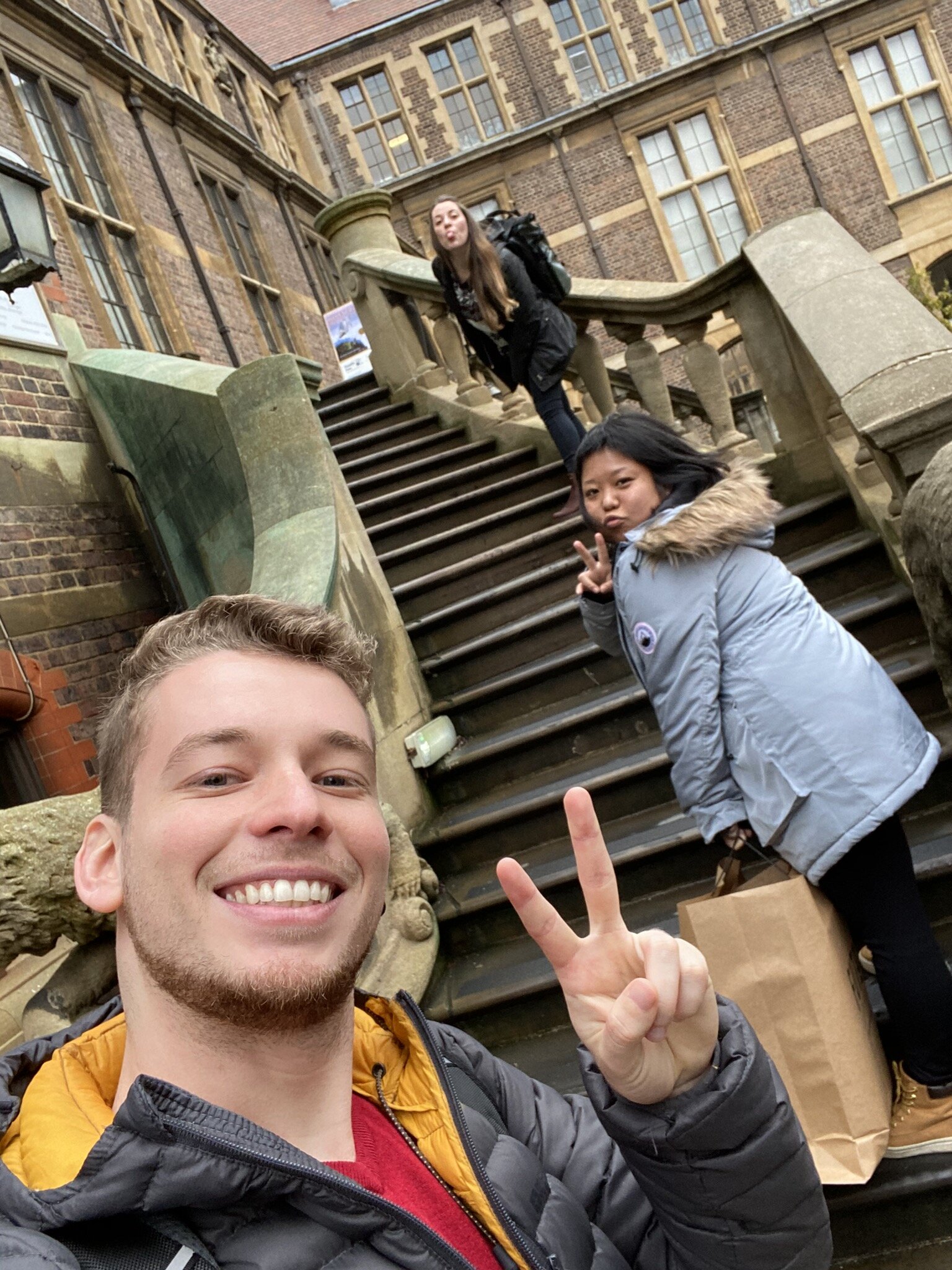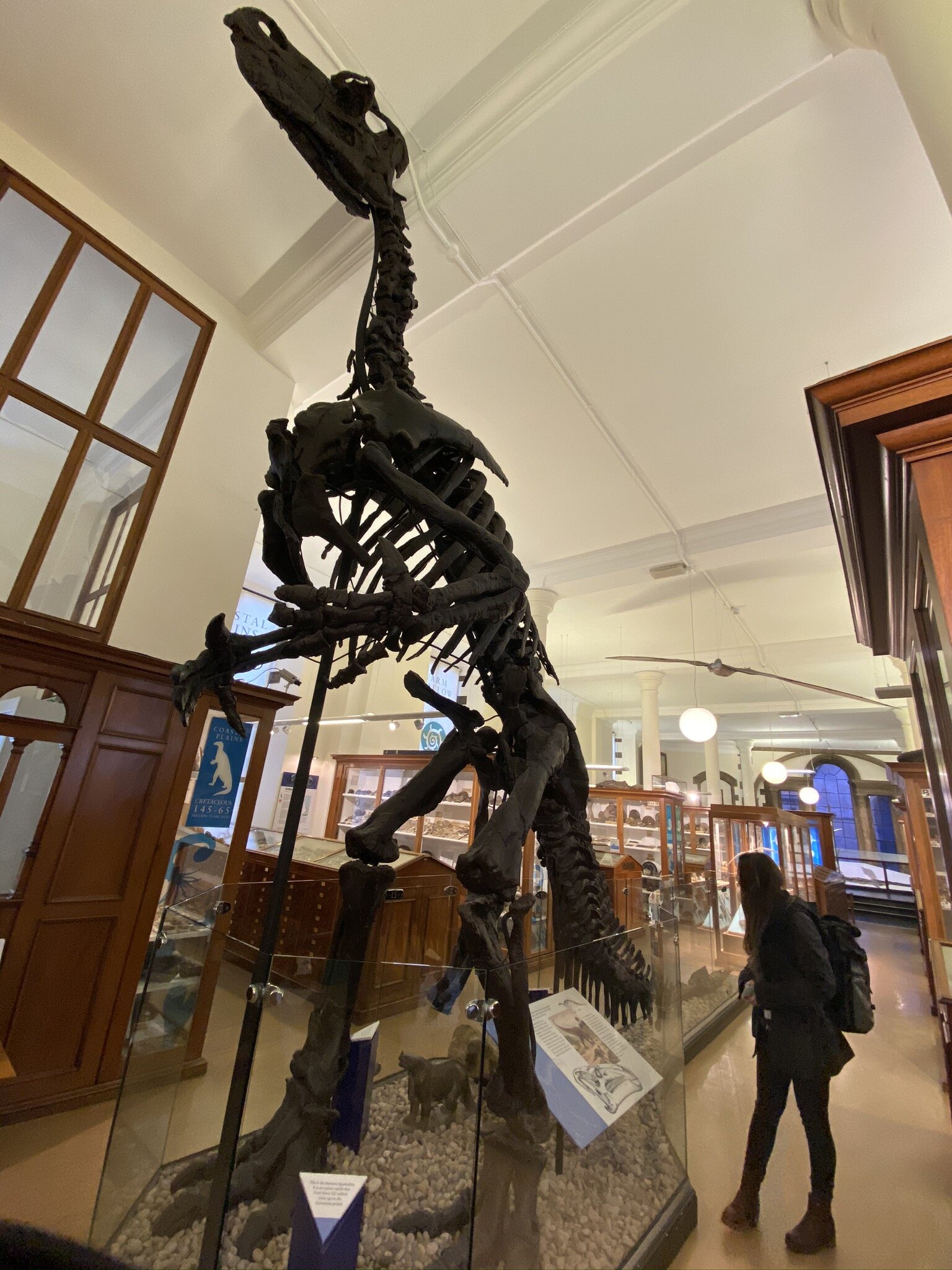Visiting the Sedgewick Museum of Earth Sciences in Cambridge
Flirting with the Allosaurus skull | Credit: Caio Biasoli
Back in December 2019, I visited the Sedgewick Museum of Earth Sciences in Cambridge with my little brother, Caio, and our friend, Kemi. I had planned to write about it then, but Covid happened and it somehow just completely escaped my mind. However, I was going through some old photographs and found some gems from that day - hence the belated post.
Kemi is a Brazilian anthropologist, activist, and all-around absurdly knowledgeable person. Having a conversation with Kemi is a mixture of being intrigued, amazed, educated and challenged in the best way possible. Think I’m exaggerating? Click here and find out for yourself.
With Kemi’s academic background, it is no surprise that she wanted to visit the Museum of Archaeology and Anthropology at Downing Street in Cambridge, so we had fun looking at their exhibitions - proof below.
While we were there, I started looking out for representations of herps in the exhibitions. I’ve written before about cultural links to herps in different societies, so it was interesting to see how reptiles and amphibians were symbolised throughout their exhibitions.
The Sedgewick Museum of Earth Sciences is also on Downing Street, so Caio and Kemi kindly agreed to visit it with me. This is Cambridge University’s oldest museum, and although I enjoy geology in general, I focused mostly on their exhibits of extinct animals - mainly animal fossils, cast, mould, trace, etc.
As you walk in, you are greeted by Iggy, the Iguanadon - an ornithopod from the Early Cretaceous. Iggy is displayed standing upright on its two hind legs and these reptiles were indeed previously thought to walk on two legs. However, more recent studies suggest that ornithopods’ backbones were likely more parallel with the ground, which would suggest that they actually walked on four legs.
Iguanadon fossils display at the museum
Iguanodon, like the gigantic and endearing sauropods we see in Jurassic Park or the Land Before Time, were herbivores. However, when you say “dinosaurs” most people will think of huge theropods, such as the Allosaurus. Looking at their skulls, you can see where the fascination comes from. Allosaurus are large theropods from the Late Jurassic and we have strong evidence to suggests that these guys preyed on large herbivores such as the famously plated Stegosaurus.
Speaking of large theropods, it’d be difficult to leave “the king of the tyrant lizards” aside - nobody puts T.rex in the corner. At the time of our visit, the museum had a little quiz for kids to complete, which included a few fun facts such as the Tyrannosaurus’ teeth being replaced throughout its life. The museum also has “Clare” on display, which is a reconstruction of a T.rex’s skull.
Kemi “vibing” with T.rex.
Moving on from extinct reptiles to extinct mammals, I couldn’t leave these two aside - they were pretty impressive. So it comes as no surprise that they share a similar specific name in their binomen - gigantic indeed!
The museum has, obviously, a lot more to offer and I wish we could have spent more time there so I’ll definitely go back. However, I thoroughly enjoyed my time with Caio and Kemi and couldn’t have asked for better company.












